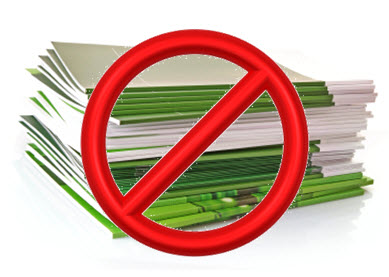Along with a few co-workers, I’ve spent the better part of this week doing secret shops of a new client’s branch offices along with their competitors. All in all, we’ll visit over 80 bank and credit union branch offices in the span of three days. In that time, I’ve learned that we all need to do away with paper brochures.
Many will read that intro paragraph and say “NONSENSE!” Paper brochures are how we get our account information out to interested (and possible) customers and members!
To which I would say: your paper brochures are allowing your branch staff a crutch (that they really don’t need), they are limiting the possibility of having a real conversation, and they are the beginning of a path that leads to a lot of information, but no close in sale.
Do you still think you need to keep your paper brochures around?
I wouldn’t. In every shop I performed where I was first handed a piece of paper with all of the different account types written on it, it made it just that much easier for me to exit the branch stage left and “come back when I’ve looked it over and made a decision.” Even some of the best branches that I shopped where they collected my contact information to follow up have lost the battle.
Think about your branches without paper brochures. People walking in the doors can’t grab and run. They need to sit down and talk with a qualified representative. Your staff doesn’t have a “script” to read. Instead, they, too, need to sit down and talk with customers. Ask questions, find out what they need.
Then (and here comes the fun part) your staff is forced to do one of three things:
- Close the sale. After asking the right questions, establishing needs, and making a recommendation – they open an account!
- Send the prospect more information. Either through email or an electronic brochure system (MarketMatch recently helped a client implement such a system that collects and tracks prospect email addresses and the information they requested), send them an electronic brochure to their email. This gives a clear path for follow up.
- Let the customer go on their merry way.
In my opinion, each of these options is better than providing printed information and watching a potential sale walk out the door because no conversation existed.
What do you think? Could your bank or credit union do away with paper brochures? Let us know!


